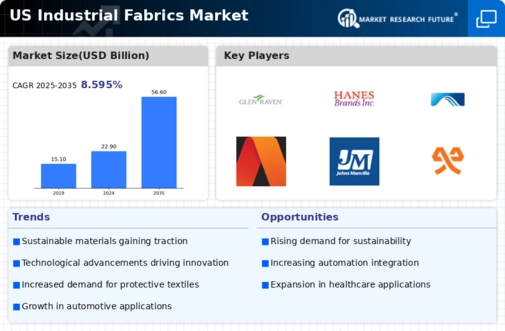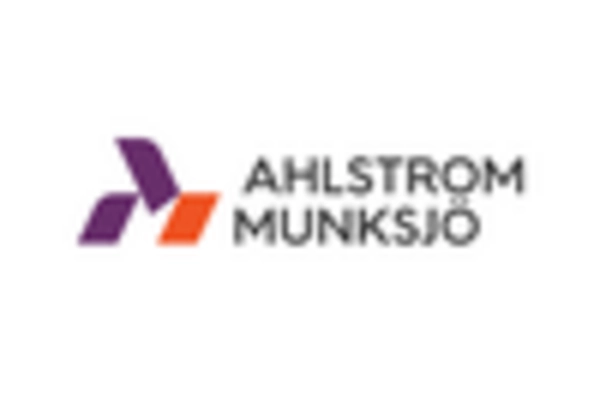Growth in Construction Activities
The construction industry is witnessing a resurgence, which is likely to bolster the industrial fabrics market. With an increase in infrastructure projects and residential developments, the demand for industrial fabrics used in geotextiles, tarpaulins, and protective coverings is expected to rise. In 2025, the construction sector is anticipated to contribute around 30% to the overall industrial fabrics market. This growth is indicative of a broader trend towards using high-performance materials that can withstand harsh environmental conditions, thereby enhancing the durability and longevity of construction projects.
Rising Demand in Automotive Sector
The automotive sector is experiencing a notable increase in demand for industrial fabrics, driven by the need for lightweight and durable materials. As manufacturers strive to enhance fuel efficiency and reduce emissions, the use of advanced industrial fabrics in vehicle interiors and exteriors is becoming more prevalent. In 2025, the automotive industry is projected to account for approximately 25% of the total industrial fabrics market. This shift not only reflects a growing trend towards sustainability but also indicates a significant opportunity for fabric manufacturers to innovate and cater to the evolving needs of automotive producers.
Expansion of Healthcare Applications
The healthcare sector is increasingly adopting industrial fabrics for various applications, including medical textiles and protective gear. The rising focus on hygiene and safety in healthcare settings is driving the demand for specialized fabrics that offer antimicrobial properties and durability. In 2025, the healthcare segment is projected to represent approximately 15% of the industrial fabrics market. This trend suggests a growing recognition of the importance of high-quality materials in medical environments, which could lead to further innovations in fabric technology tailored for healthcare applications.
Increased Focus on Energy Efficiency
Energy efficiency is becoming a critical consideration across various industries, influencing the industrial fabrics market. Manufacturers are seeking fabrics that contribute to energy savings, particularly in applications such as insulation and protective clothing. The push for energy-efficient solutions is likely to drive innovation in fabric technology, with a projected increase in market share of around 20% by 2025. This trend indicates a shift towards materials that not only meet performance standards but also align with broader sustainability goals, reflecting a growing awareness of environmental impact.
Technological Innovations in Fabric Production
Technological advancements in fabric production are reshaping the industrial fabrics market. Innovations such as automated weaving and advanced coating techniques are enhancing the performance characteristics of industrial fabrics, making them more versatile and durable. In 2025, it is estimated that these technological improvements could lead to a market growth rate of approximately 10% annually. This trend suggests that manufacturers who invest in cutting-edge technologies will likely gain a competitive edge, as they can offer superior products that meet the diverse needs of various industries.

















Leave a Comment